|
| |
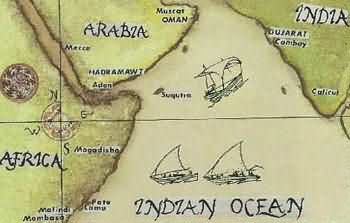 Pre-15th Century
Pre-15th Century
It was originally believed that Zanzibar was first settled by
Africans around 3000 to 4000 years ago. Centuries later, people
from Greece, Egypt, Persia, Arabia, India, China and Europe
began to settle.
Claudius Ptolemy, a famous Greek geographer, who lived in Egypt,
made mention of Zanzibar in his work in about 150 AD. Zanzibar
was a major trade route from Roman Empire to the Indo-Chinese
ports. By
the 4th century AD, Bantu people settled here, with Islam
making it's way in, about 7 AD. These were Arab and Persian
emigrants who were fleeing their own war torn countries. Through
all the intermarriages, the language of Kiswahili was born.
This forms the base of the present day language Swahili, which
is the language spoken in Zanzibar.
This appeared to be a time of peace, with Persians continuing
to intermarry with Zanzibaris, and trade established with
their homelands. Goods traded included gold, ebony, ivory,
tortoise shells and slaves.
In return they received porcelain, cloth and beads. This happy
and prosperous time continued until the arrival of the Europeans
in the late 15 th century.
Zanzibar had been an independent Sultanate until the arrival
of Vasco Da Gama in 1498.
|
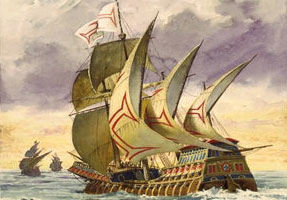 Portuguese Rule
Portuguese Rule
Vasco Da Gama's expedition from Portugal was the beginning of
the establishment of Portuguese rule over East Africa and Zanzibar.
Lasting for 2 centuries, the Dominicans, Jesuits and Augustinians
began building churches and mission outposts in an attempt to
convert the entire population to Roman Catholicism. This attempt
failed, as may be seen in the strong Muslim influence in Zanzibar
today. Thinking
they were "invincible", the Portuguese omitted to
send enough men to protect their territories.
By the late 1800's they surrendered their last East African
holding, Mombassa, which is on the coast of present day Kenya.
There are few remnants of Portuguese rule over Zanzibar. Amongst
these are bullfights which are held on Pemba island and a
few Swahili words. |
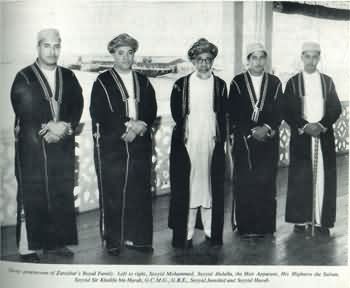 The Sultans of Trade
The Sultans of Trade
After the Portuguese rule of Zanzibar which lasted 200 years,
the Omanis took over the regions. Local African chiefs protested,
and the Omanis ruled literally up until the revolution in
1964.
During
this period, many Sultans of the Busaidi family ruled. The
name Busaidi is still common in Zanzibar today.
Of the Sultans, the most famous is Seyyid Said bin Sultan,
Said the Great. He introduced cloves to the island, and along
with the lucrative slave trade, garnered himself a very rich
empire. So much so, that he decided to move the Sultanate's
capital to Zanzibar from Muscat in the 1840's
Slave
trade through Zanzibar as mentioned was very lucrative. Traders
like Tipu Tip were able to make large fortunes. Such fortunes
allowed this trader for example to afford over 30 concubines,
with their children and an official wife and her two children
After
the death of Said the Great in 1856, the royal house was left
with numerous power struggles.
|
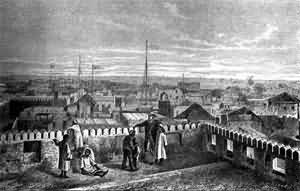 Great Britain in Zanzibar.
Great Britain in Zanzibar.
Britain had been fighting for the abolition of the slave trade
which had been largely unsuccessful. They were limited to intimidating
slave traders and effecting quotas.
The British managed to persuade Said's successors into stopping
the trade, but many treaties were ignored.
In 1890, Sultan Ali, the last of Sultan Said's successors, finally
honored his treaty in declaring all slaves free, and freeing
any slaves that entered the area. In
1896, Sultan Hamed bin Thuwain died, leaving the throne vacant.
Hamed's cousin, Khaled saw an opportunity and crawled through
the palace window, gained a few supporters and announced he
was the new Sultan.
The British were obviously not impressed with this, as Zanzibar
was a British protectorate. The British ordered Khaled to
lower his flag by 9a.m. on the 27th of August 1896.
Needless to say this was not done, and the shortest war in
history ensued (it is still listed in the Guinness Book of
World Records). The British opened fire on Stone Town, destroying
the Palace, the Harem, the Sultan's ship and the lighthouse.
The House of Wonders was slightly damaged. 40 minutes later,
the war was over and Seyyid Hamoud bin Mohammed was declared
the new Sultan.
The
British protectorate continued until independence was granted
in 1963.
|
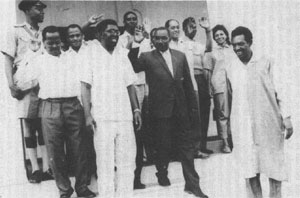 Revolution Day
Revolution Day
Constitutional independence was granted to Zanzibar on 10 December
1963. On 12 January 1964, John Okello, a Ugandan President on
Pemba, began what was to be the bloodiest revolution ever seen
in Zanzibar. Okello
began by gaining support amongst the black population, then
started to capture strategic police and government buildings.
Okello based himself in the building of the radio station,
to help him broadcast his message to the now hungry revolutionaries.
Within a couple of days, 17000 Arabs and Indians were killed.
Witnesses testify that blood was flowing down the streets.
Many Arabs and Asians fled, their land confiscated and nationalized.
Abied Karume, leader of the Afro-Shirazi party, was declared
the new president and proceeded to form the Revolutionary
Government of Zanzibar.
This
was a new beginning for the people of Zanzibar that had witnessed
centuries of oppression.
|
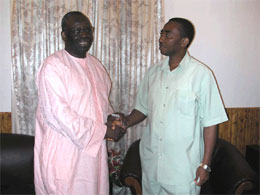 Post revolution and present day
Post revolution and present day
On 24 April 1964, Zanzibar joined with Tanganyika (now Tanzania)
under it's President Julius Nyerere.
Zanzibar was granted a constitutional right to maintain it's
own President, First Minister, Cabinet and House of Representatives.
This is still the situation today. During
Karume's rule, he established relations with many socialist
countries such as China, USSR and Cuba. Through these relationships
he was able to establish roads, airports and an infrastructure
badly needed after the flight of the Asians.
Only in the late 1980's was Zanzibar opened as a free market
and it then started taking advantage of the tourism potential.
Today Zanzibar is led by Amani Karume, son of Abied Karume,
The ruling party is the CCM, and democratic elections are
held to elect the president and ruling political party.
Many
changes have taken place since the revolution, and Zanzibar,
together with Tanzania, is slowly developing it's own niche
in the tourism and economic market.
|
|
Back |
|
|